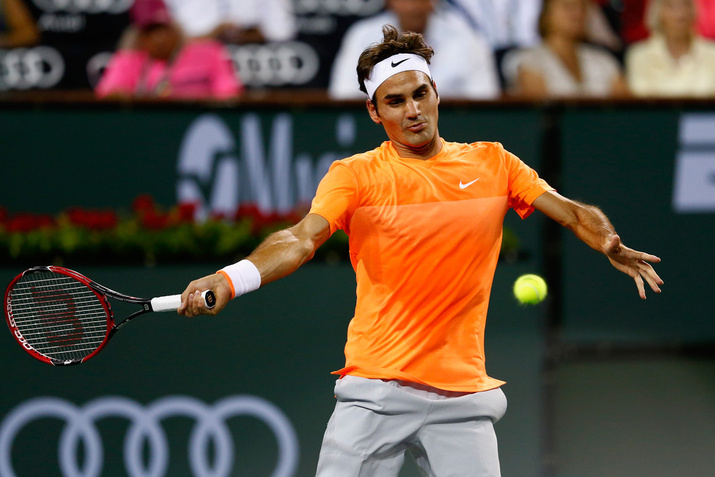Don't miss any stories → Follow Tennis View
FollowFederer Denies Sock for Indian Wells Quarterfinal Berth
Entering the 2015 BNP Paribas Open, Jack Sock could not have placed high expectations on himself. After a promising campaign last year that featured seven quarterfinal appearances, he left the Tour for hip surgery and missed the Australian Open. Around the same time, his brother suffered from a bout of Lemierre’s Syndrome, a pneumonia-like illness that temporarily left him on life support. Once Sock recovered from his own procedure and helped guide his brother back toward health, he found himself lacking in match play.
A win or two at a Masters 1000 event would have marked a solid step forward in his return, but the young American has used Indian Wells as a springboard for much more. Sock reached the round of 16 at an event of this quality for the first time after upsetting two seeded opponents, including world No. 16 Roberto Bautista Agut. He weathered a range of playing styles during this three victories at Indian Wells, ranging from the patient baseline rallying of Yen-Hsun Lu to the explosive left-handed serve of Gilles Muller, against whom he needed to save a match point during a final-set tiebreak.
With his brother’s name printed on his shoes, Sock entered one of the largest tennis stadiums in the world to face the greatest player in the sport’s history. Roger Federer had not been flawless in his victory over Andreas Seppi a day before, struggling by his own admission to adjust to the conditions and the balls. Still, the gulf separating the two men's credentials cast Sock as the clear underdog and thus gave him the freedom to unleash his electric serve-forehand combinations without fear.
A match defined by staccato exchanges and imposing serves loomed. Sock showed few signs of initial nerves, pounding a 136-mph serve in the second game. He had made the curious tactical decision to receive first, however, which left him always trying to draw level with Federer rather than edging ahead. The 17-time major champion lost little time in heightening the pressure on his young opponent, rushing the net whenever possible and dazzling the crowd with sliding retrievals behind the baseline. When he took the upper hand, he whipped forehand lasers near the lines with vintage precision.

During a 13-minute fourth game, the contrasts between them became apparent. Sock could match Federer first strike for first strike, but his movement and consistency fell far short of the polished Swiss. He saved a host of break points in that game, only to see Federer cruise through a hold of his own. The world No. 2 pounced in the next game, exploiting a questionable choice by Sock to use a drop shot and slices rather than straightforward power. The cat and mouse action around the net invariably ended in Federer’s favor, and he struck a crisp backhand pass to convert a break.
The rest of the first set and in fact the match unfolded routinely from there. Federer consolidated his break with a game during which he hit only one groundstroke. Despite the gritty surface at Indian Wells, he delivered three aces, one on second serve. Sock’s confidence seemed shaken after dropping the first set, and perhaps part of him felt content to have achieved as much as he had here. A lapse in focus early in the second set saw him win just two points in the first four games. The first of those breaks came after consecutive inside-out forehand errors, and the second with consecutive double faults.
So much had the wheels fallen off the American’s game at this point that a second-set bagel looked likely. To his credit, Sock regrouped and fended off three break points in his next service game to get on the scoreboard. He would hold serve once more, allowing Federer to close out the match on his racket. This was just a formality, since the world No. 2 never faced a break point on his serve in the match. He struck more aces (eight) than he lost service points (seven), and he secured a 6-3 6-2 victory in 70 minutes.
Many fans are anticipating a potential Saturday semifinal pitting Federer against archrival Rafael Nadal. Before then, however, the Swiss will need to solve Tomas Berdych, who has won two of their last three encounters at Masters 1000 tournaments on outdoor hard courts. The pair have split their 10 meetings since the start of 2009, and Berdych’s outstanding form this year suggests a stiff challenge ahead. Both men will have a full day on Thursday to prepare for their clash on Friday afternoon.










